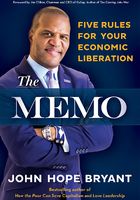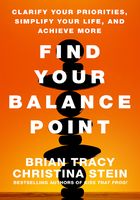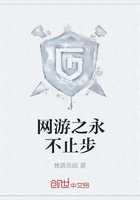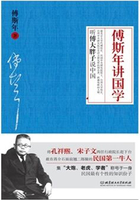Modern Myths and Stereotypes
Forewarned is forearmed. Understanding the facts on women's current roles and challenges will start you on the journey to being a leader shaping events. You will understand, be able to challenge, and help dispel some self-reinforcing cultural attitudes left over from eons of history during which men have been recognized as the power figures.
Close your eyes and imagine a “leader.” What do you see? Extensive studies show that in the United States, the visual image for almost everyone is a man. The higher-level the leader is imagined to be, the more likely this is to be true. Despite the presence of “first women,” we are still perceived as Outsiders to leadership—sometimes even by ourselves.
This may seem strange, since women's (and men's) roles have changed in so many other ways. No longer are women assumed to be housewives, waiting at the door in our crisp aprons to welcome home our breadwinner husbands. Likewise, younger generations of men have turned away from the “father knows best” family to a more egalitarian one (though maybe not as quickly as many women hoped). Why, then, do the outdated roles of men as leaders and women as followers have such sticking power?
Who Is a “Leader”?
Communications researchers tell us that we all have “frames” in our minds to help us process big concepts and deal with new information. When new facts don't fit the frame, the default is that the facts are ignored and the frame remains. So far, the frame for “leader” and “leadership” is masculine. This is reinforced in the historical (and sometimes still current) teachings of many religious traditions, including those of Christian, Muslim, and Jewish fundamentalists, that the man is the head of the family and the wife has a more constrained role. Men are the only recognized church leaders and keepers of the faith. With such long-standing mores, no matter how many factual stories appear in the news about individual women as leaders, the frame remains the same.
The masculine frame for leadership seems to depend heavily on perceptions of one quality: decisiveness. During the 2008 presidential primaries, the Pew Research Center conducted a survey on whether men or women make better leaders. A summary in the Economist showed how ambivalent we are on who should be in charge; we think women have what's needed but still favor men for the role: “Americans say that they think women are more likely to have the qualities needed to make a good leader. In the end, however, more would still opt for a man in charge.” Why?
Of the various qualities of leadership, women were rated far, far ahead of men on being “honest,” “intelligent,” “compassionate,” “outgoing,” and “creative,” and were considered just as “hardworking” and “ambitious” as men. Men were perceived as excelling only in being “decisive.”[32] The preference for men as leaders, then, suggests that the frame for respondents emphasized the role of decisiveness in leadership.
Whenever decisiveness is the primary or only leadership skill identified and men are perceived as more decisive than women, the quick mental picture of a leader will be of a man. Many women were not thrilled when President George W. Bush identified himself as “the decider.” The late-night shows made us laugh by saying it made too many of us remember our first husbands. But this bald statement won votes and applause for him as a “strong leader.”
Frames can eventually shift, however. If we rate skills where women shine as the essential ingredients in leadership, the leadership frame will begin to shift. For example, if perceptions of women remain the same but creativity and compassion are seen as critical characteristics of leaders, having more women as leaders will become the more obvious choice.
Changing this frame is more than a semantic move. The frame of women as Outsiders rather than leaders is a powerful subconscious influence when current bosses choose candidates for promotion or voters choose their representatives. Partly because of mental frames, making it to the top rungs of anything is still tougher for women than for men. The dominant frames support sexism, the “old boys' network,” and discrimination at work. In politics, public-opinion research confirms American voters still think of men as the natural contenders for top positions despite the 2008 campaigns of Governor Sarah Palin and Senator Hillary Clinton. Until the frame of “leader” opens up to include women and the definition of “leadership” includes a broader range of skills than decisiveness, women will be at a disadvantage.
We know decisiveness is not enough to make a successful leader, and you can take steps to mitigate this framing. Practical applications are all around you. When you draft your resume, describe yourself or a colleague for a promotion, write a job description, or suggest someone for an association office, think about a balance of skills—including those at which women excel and, if appropriate, decisiveness. Inadvertently reinforcing the importance of the current definition by making decisiveness the only or most important criterion is a mistake. So, for women, is leaving it out.
Women are also disadvantaged by a frame that places undue emphasis on their appearance. Women running for public office have plenty of stories to tell about how reporters describe their clothes, ankles, cleavage, or hairstyles (often in unflattering terms) before covering what they have to say. Female concert musicians know “blind auditions,” where they try out by playing behind a curtain, are much more likely to result in being selected for the orchestra—unless the judges can see their high heels. The same psychological challenge exists for most women to be taken seriously and get beyond the distraction of remarks about how they look or sound as women. The Women's Media Center and Media Matters have produced a video and petition campaign to point out the negative network and cable coverage of women, “Sexism Sells, but We're Not Buying It,” which is full of examples like the Fox News headline “Clinton's Nagging Voice Is the Reason She Lost the Male Vote.”[33] Numerous articles have also shown the impact of this intended or unintended distortion in academia, business, the courtroom, medicine, science, and the ministry.
The ministry provides a poignant example. Reporting on research from Duke University, the New York Times noted that while women make up 51% of divinity school students in mainline Protestant churches, which have been ordaining women for decades, they only hold 3% of large congregations with regular attendance of over 350 people. “The Rev. Dottie Escobedo-Frank, pastor of Crossroads United Methodist Church in Phoenix, said that at every church where she has served people told her they were leaving because she is a woman.”[34]
A further complication is that women cannot simply shift the leadership frame by demonstrating decisiveness—or other forms of assertiveness—in the same ways men do. When women speak out, we are often tagged as whiners. When men speak out, they are seen as “take charge” types.
Among ourselves, over dinner, in conferences, or as mentors, women have talked about, complained about, and laughed about how ridiculous this is for years. What feels different and very positive to me is that a few male commentators are pointedly mentioning the unnecessary negative scrutiny faced by women leaders. Nicholas Kristof, columnist for the New York Times, has stated: “The broader conundrum is that for women, but not for men, there is a trade-off in qualities associated with top leadership. A woman can be perceived as competent or as likable, but not both.”[35] In short, when it comes to manifesting decisiveness, we are “damned if we do and doomed if we don't.”
The Double-Bind Dilemma for Women
In fact, “The Double-Bind Dilemma for Women in Leadership: Damned If You Do, Doomed If You Don't” is the title of an exceptional business research study released by Catalyst and sponsored by IBM.[36] The researchers interviewed senior business executives from the United States and Europe to examine stereotypical attitudes that hold women back as “atypical leaders.” Their findings make it clear why you and other women still find it daunting to be chosen for and accepted in leadership positions in business—no matter how skilled or talented you are. My experience has been that the double-bind dilemma continues to hold true at upper-management levels in politics as well. Three forms of this dilemma can diminish women's chances to compete equally and be a problem for you.
“Extreme perceptions—Women leaders are perceived as ‘never just right.’ If women business leaders act consistent with gender stereotypes, they are considered too soft. If they go against gender stereotypes, they are considered too tough.”[37] Tom Toles, political cartoonist for the Washington Post, caught the tone exactly in a nine-panel cartoon during the 2008 elections. Hillary Clinton is at the lectern and a voice from the side describes her: “She's a robot. Calculating. Distant. Cold-blooded. Machine-like. Stony. Emotionless.” Then Hillary sighs, and the voice says, “Hysterical female.”[38]
“High competence threshold/lower rewards—Women leaders face higher standards than men leaders and are rewarded with less. Often they must work doubly hard to achieve the same level of recognition as men leaders for the same level of work and ‘prove’ they can lead.”[39] Women of color face the biggest odds. Indra Nooyi, who is the CEO of PepsiCo and on the Forbes list “100 Most Powerful Women in the World,” said when she accepted the CEO position, “Being a woman, being foreign-born, you've got to be smarter than anyone else.”[40]
“Competent but disliked—When women exhibit traditionally valued leadership behaviors such as assertiveness, they tend to be seen as competent but not personable or well-liked. Yet those who do adopt a more stereo-typically feminine style are liked but not seen as having valued leadership skills.”[41] Early in my career I hoped to be liked as a boss but decided that it was more important to be respected by my colleagues as being mission-driven, good at my job, and fair. To a large degree, it meant separating my social life from work.
The first person who identified the double-bind dilemma was Kathleen Hall Jamieson, now professor at the Annenberg School for Communications at the University of Pennsylvania, in her book of the same name. She carefully laid out the reality of the conundrum but went on to refute the “women as victims” idea. Instead of feeling discriminated against, Jamieson set out effective marching orders for all of us to move forward by focusing on how women's strengths have brought about an inexorable wave of change. As she said, “They [women] have systematically exposed the fallacious constructs traditionally used against them, and changed and enlarged the frame through which women are viewed.”[42] She saw reason for optimism, and there is more today.
Women will overcome no-win double-bind dilemmas by refusing to accept them, expanding the definition of acceptable skill sets, and becoming increasingly capable of meeting challenges successfully. We can keep enlarging the frame of “leader” to include us. The women who follow us should not have to endure these double binds in the first place. Women should not have to play the game to be more like men or face a more arduous climb because of an outdated model of leadership.
Answering Fairy Tales with Facts
To become recognized leaders with our own style, we must also confront and refute some other unhelpful story lines. Worth particular attention are five self-reinforcing “blame the victim” myths that make it seem it is our own fault that women do not have an equal chance to move into leadership. These oft-repeated stories about women and leadership are really just fairy tales. Accurate information can empower you to say, “That's simply not true, and here are the facts.”
These five insidious fairy tales are the Patience Myth (Don't be impatient, wait your turn—it's just a matter of time); the Women-Lack-Drive Myth (Women don't want to compete for the top jobs); the Drop-Out Myth (The smart, savvy women are dropping out to stay home); the No- Discrimination Myth (It is only happenstance that everyone at the top here is a man—we're gender neutral); and the No-Qualified-Woman Myth (We can't find women with the skills we need, and anyway, our customers don't want to deal with a woman).
All these myths are pervasive, and to some degree persuasive. Like most urban legends, they contain tiny grains of truth that have been blown out of all proportion. Unfortunately, these convenient stereotypes affect, or even infect, not only current policy makers but our own thinking about ourselves. And they play a big role in stalling the momentum of women moving up in business and politics.
The Patience (or Pipeline) Myth
Many of us have felt comfortable with this idea. Women, maybe even you, have thought, “It's just a matter of time; the pipeline is filling with women, and my chance will come.” A lot of advice for women is based on this erroneous idea and usually comes out as, “Just be patient (less pushy) and wait your turn.” Many of us who believe our turn will come head back to grad school to improve our credentials so as to be ready for it. Girls are still more likely than boys to fit into this mold, as teachers and educational studies tell us.
You can easily be pretty comfortable when you believe in a wide-open promise of opportunity for your career if you study hard and work hard (or even harder and harder). I hope for your sake this promise comes true, but for many skilled women, for the foreseeable future, it will not. Getting more education is important, but doing it solely because you be lieve it will bring you promotions is unrealistic. We need to be careful about wearing “everything is fine” blinders.
Wouldn't it be great if having more women in leadership were just a matter of time? The assumption just doesn't hold up very well, though, when you weigh the facts. Chapter 3 looks at how we are doing on taking our place at the power tables where the big decisions are made. The facts there make clear that no matter how you look at it, the pace of progress does not justify complacency. A selection of New York Times business section headlines one week in December 2006 made this clear: “How Suite It Isn't: A Dearth of Female Bosses” and “Gender Pay Gap, Once Narrowing, Is Stuck in Place.”
The Women-Lack-Drive Myth (Women Don't Want the Top Jobs)
The Women-Lack-Drive Myth is perhaps more damaging to women's confidence than the Patience Myth. Have you heard statements like, “There really is open competition, but women just don't want to make the sacrifices to fight their way to the top”? Or “If only women were more like men, they'd get more of the big jobs”? Again, there could be a grain of truth here if the assumption of a level playing field were accurate. But it isn't. So we need to ask, are women really more comfortable at less stressful levels? Do we really not want to move up to the top jobs such as CEO?
Careful research by Catalyst on nine hundred corporate executives from Fortune 100 companies shows that men and women equally desire to be CEOs, although circumstances may make attaining the goal impossible.[43] Expectations of top corporate officers, however, often continue to mirror the organization-man corporate life of earlier times. Then, the leader class was almost all men because they had the education, experience, and competitive drive (and women were often kept out by discriminatory policies and a lack of legal protections). The traditional view was work-centric, and the workplace reflected a comfortable view of the world with life and work as two completely separate spheres. It was accepted that work required unending sacrifice to scramble up to the top, and someone at home—generally a wife or paid staff—would manage all the rest of life. This traditional workplace continues to be the model almost everywhere.
The same model dominates in the professions—medicine, law, academia, science. Few women entering the professions have a spouse at home, but most programs are designed as if they did. Dedication and commitment are measured by extraordinarily long hours rather than outcomes. More than thirty years ago Arlie Russell Hochschild wrote, “The classic profile of the academic career is cut to the image of the traditional man with his traditional wife.”[44] This could have been written today.
Extensive longitudinal studies by the Families and Work Institute show most women reject the work-centric model in favor of a dual-centric one with family and work intertwined. The traditional workplace, which continues to be the model almost everywhere, is not effective when the pipeline for leadership is filled with women. Women see family and work as “the yin and yang of life,” as one focus group respondent termed it. She went on to describe how “take Susie to the dentist for a toothache” and “finish next year's departmental budget” were both on her “to do” list, and she constantly juggles her priorities to manage it all. More and more men are also looking for a dual-centric or integrated life.
Meanwhile, women moving up often feel they face a very difficult reality—stay unmarried or married without children, be lucky enough to have an extremely supportive partner, or find ways to balance work and family in an unforgiving environment. Single mothers have a particularly difficult path to meet their responsibilities and grow to the top of their abilities. Corporations, nonprofits, and governments need good talent—as much as they can get. Women are the biggest pool of underutilized talent in this country. Big changes in workplace practices are in everyone's interest, to make the country as strong as it needs to be. These changes will make families stronger, too.
So, yes, women want to be CEOs—but often not in the traditional mold. And changes to that mold will benefit everyone, not just women.
The Drop-Out Myth (the Smart, Savvy Women Are Dropping Out to Stay Home)
During good economic times, you have no doubt seen stories in the media about how women with top credentials are dropping out to stay home with their children. You might even know someone who decided to take this step. Reality is more complicated, however, and stories headlined “The Mommy Wars” sell publications but don't give the real details.
A few small studies of women graduates of premier universities that were done in the economic boom times of the '90s show that some women who delayed motherhood until they had established their careers chose to spend some time at home with their children. “Chose” is the right word: most of these women have high-flyer husbands and could afford this choice. First Lady Michelle Obama, an accomplished lawyer, is taking this approach in the White House.
The data are relatively new, and no one knows how widespread the phenomenon is or whether it will hold true at times of high unemployment. It is certain that most women with children have not left the labor force for family reasons. Two-thirds of women with small children are in the workforce, as are three-quarters of those with school-age children. An overwhelming proportion, and a steadily increasing number, of em ployees living in couples are in dual-earning couples.[45] Most family budgets demand more than one income, so virtually all women in this country will be in the workforce at one time or another while they are carrying family responsibilities for children or elders.
In addition, no one knows whether the women who are “opting out,” to use Lisa Belkin's phrase, are making a permanent decision to leave the labor force or work in part-time or consultant positions, or are simply taking a few years to focus on their children rather than their careers. With the stresses of balancing family and work and a desire to give their children the best start possible, many women would choose to follow this route if there were support for the family's income and a way to step back into their careers. Sylvia Ann Hewlett leads the corporate research on establishing “off-ramps and on-ramps” to make this feasible.[46]
For some women, most easily for those with substantial family incomes, the short-term choice might indeed be “stay-at-home mom.” A number of families, particularly those doing shift work, are alternating caring for their children as a team. In a few homes, and with increasing frequency, dad is the stay-at-home parent, particularly where the woman is the primary wage earner. In 2003 (the latest year for which data are available), 189,000 children in two-parent households were with dads at home, compared with eleven million children with stay-at-home moms (some of whom own their own small businesses or work part time). Those numbers did not change significantly between 1994 and 2002.[47] Most single moms, of course, don't have a choice at all—they are in the workforce.
This Week I Will . . .
Look around at where the women are—and are not—in top positions at my office and in my community.
Check out my state's record on women in public office and connect up with a group that is making a difference.
Counter any of the myths that I hear with the facts!
It is also true that some corporate women are voting with their feet and leaving hostile environments or family-unfriendly employers to set up and run their own businesses or consulting operations. The top brass in companies should worry about this critical brain drain as their talent moves to more promising opportunities, including woman-owned businesses. What a hue and cry we would hear if all this great talent were moving to another country! Instead, silence reigns. Few large corporations make any substantial changes in response to losing skilled women, and the top layers stay essentially male-only. Taking a blame-the-victim approach, the male leaders claim that “women are dropping out because they want to be at-home moms.”
The Drop-Out Myth is also invoked to explain the distressing picture seen across the professions: increasing numbers of women completing graduate school compared with men, but very few making it to the top rungs. Medical literature notes a paucity of women doctors as top faculty; the National Science Foundation reports there are few women in prestigious scientific positions; bar associations cite low numbers of women partners in big law firms; commissions at universities like Johns Hopkins, MIT, and Harvard find a lack of women among tenured faculty or at top academic ranks. Each university or profession seems to think it has a unique problem. However, underlying all of them is an insufficiency of women in leadership. All these reports mention the same missing ingredients: the presence of few, if any, women role models in visible top positions; a lack of respect for women in general, including the differing approaches they bring to the table; and inadequate or nonexistent policies on balancing family and work. None of this has to do with a preference for stay-at-home motherhood.
The Drop-Out Myth is often supported by reference to the Women-Lack-Drive Myth (and therefore shares its weaknesses). But it filters down to a widely held assumption that working moms are fleeing the workplace in favor of home and hearth. It could have a potentially heavy cost to you. What if someone who is doing the hiring assumes that, with a family (or even the possibility of a family someday), you might be here today and gone tomorrow, so it wouldn't be worthwhile to invest in your career? Of course, you would not be told this: after long battles led by women, it is against the law. Unfortunately, if the perception exists in the minds of decision makers and is reinforced in cozy locker-room conversations, it could be just enough to tip the scales to choose a man for the job.
What is really happening is not that mothers are dropping out of the workforce but that men are perceiving them as insufficiently committed to it, based on their view of the customary way of doing business, and penalizing women based on that perception. Ellen Goodman has described this phenomenon in a memorable way: “You can expect to be ‘mommified.’ Mothers are still treated as if they were a third gender in the workplace. Among people ages 27–33 that have never had children, women's earnings approach 98 percent of men's. Many women will hit the glass ceiling but many more will crash into the maternal wall.”[48] Ellen Goodman is right. Young women are closing the wage gap, but only until they have children.
In New York City, these bright twenty-somethings now earn 117% of what young men in the same age bracket earn. No more wage gap for women. But the two reasons quoted in a front-page story in the New York Times were these: “In 2005, 53 percent of women in their 20s working in New York were college graduates, compared with only 38 percent of men,” and “citified college-women are more likely to be nonmarried and childless, compared with their suburban sisters, so they can and do devote themselves to their careers.”[49] Over a lifetime, even with a fast career start, many women will not fit this second criterion—but most will still be in the workforce. Then the “mommification” begins.
Here is the bottom line on a potentially destructive myth: women are not blithely deserting the workforce en masse to be at home with their families. The “Mommy Wars,” in which at-home and at-work mothers reportedly snipe at each other's choices, are equally fictitious. E. J. Graff, an investigative journalist at Brandeis University's Schuster Institute for Investigative Journalism, has documented the “Mommy Wars” as media hype. She traces years of circular coverage based on shaky data in the “elite triumvirate of the New York Times, the Atlantic and the New Yorker.” She says, “The Mommy Wars sell newspapers, magazines, TV shows and radio broadcasts, as mothers everywhere seize on the subject and agonize, in spite of themselves. ‘Every other week there's an article saying that if you don't work, you're in trouble financially and if you do work, your child is at risk,' a single mother of three who works part-time told me.’”[50] Saying your child is at risk is a major guilt trip, especially if being at home is not a feasible option.
Though the Drop-Out Myth is just that—a myth—polls do show women across the board see the need for supportive policies so all families can decide what works best for their children without the false “choice” between family and work. Later you will learn more about MomsRising, an online organization that is advocating for a Motherhood Manifesto on important issues for moms (most affect dads, too), whether they are at home or in the workforce.
The No-Discrimination Myth (It's What You Do, Not What You Say)
As you will see in Chapter 3, we are currently stuck at very low proportions of women at the top rungs of anything—as CEOs, as top corporate officers, as state or federal legislators. What about the ever-popular idea that this is coincidental? Many an annual report claims the organization is diverse and gender neutral, but pictures of leadership circles “just happen” to show all men.
These days having no women at the top and claiming no discrimination is really a mark of poor performance by those in charge. With the pipeline filled with qualified women, when all-male leadership “just happens,” you can be sure no one is working very hard to diversify the leadership team. Smart companies have started to invest heavily in diversity strategies because they understand the workforce now doesn't, and in the future won't, be made up of only men (especially white men).
The No-Discrimination Myth is just so much rhetoric. Whatever is in question—a company, an organization, a government entity—if it has totally male leadership at the top, it isn't gender neutral; it is just another exclusive club.
The No-Qualified-Woman Myth (No Woman Had the Skills We Need)
No doubt in the past, it was often true that employers could not find women with the high-level executive skills they needed. It is true no longer. However, the myth is often repeated, along with its companion, “Our customers/clients/staff don't want to deal with a woman.” Leaders who take this approach have no interest whatsoever in finding qualified women or in seeing their expertise utilized. Their untested assumption is that qualified women aren't out there because their networks (or golf buddies) don't include any. These executives can look across their landscape and feel quite comfortable they are right. The approach is arrogant and shortsighted, however, and self-defeating for their firms.
A colleague recently told me that she and some friends, all alums of a major public university in her home state in the South, noticed that the university had no women on its board of trustees. They contacted the chair of the board and the president, who both said they were quite interested in having women appointed but, unfortunately, had no qualified women candidates. So the women did a lot of research and submitted a hefty portfolio of top women whose accomplishments (and politics) matched or exceeded those of current members of the board.
Three vacancies came and went with no women in the final cut—all the positions were filled by men. The group asked for a second meeting. The president's assistant returned their call and thanked them for their work but said there was no reason to pursue this further. Indifference was matched with inaction.
Takeaways
? Progress to the top for women is slow or even stalled.
? Women are the talent pipeline for the future. Much womanpower is still untapped.
? New ways to work that allow everyone to integrate family and work will break the logjam.
? As you step into leadership, bring more women up with you—we can do better!
The women are now organizing a network that has as one of its goals having more women appointed to boards and commissions in the state. They have included women elected officials who have some control over the purse strings for this university. Change will come, but it shouldn't be so tough!
As for the tired old myth of customers refusing to deal with women, in a world where women do the bulk of the retail buying (including big-ticket items like cars and health care), this chestnut should be retired. However, in more traditional societies—in my experience, from the United Kingdom to Japan, from Asia to Latin America—it is still repeated. American or multinational firms operating in other countries used to act as if it were true, but change is coming here, too. Particularly in newer industries such as communications and finance, many are finding they are tying their hands on attracting and utilizing the best talent rather than helping the business by bowing to old customs.
Taking the Next Step
Let's bring this down to ground level. Should we just hope the way forward will open up commensurate to the talents and experience women bring to the table? Should we be hampered by “blame the victim” myths such as claims that women are dropping out or opting out, thus “proving” we don't really want to move up? Do we accept the fairy tale of a level playing field or buy that having all men at the top is “coincidence”?
Look around. What does progress look like in your company . . . or your state . . . or on the board of your professional organization or business? Are you comfortable with the current situation? If it doesn't provide room for talented, skilled, and qualified women like you to move into leadership roles in your field, what can we do about it?
Understanding the Patience Myth is false means action is needed. Just waiting in line won't open opportunities in a competitive world. I'm betting on women to lead the changes to make balanced leadership a reality. To help motivate us, the next chapter gives some cold, hard facts on how far we have—and haven't—come.















